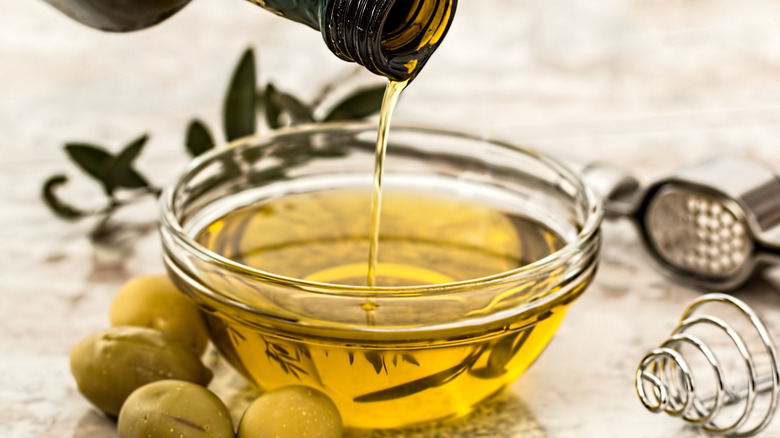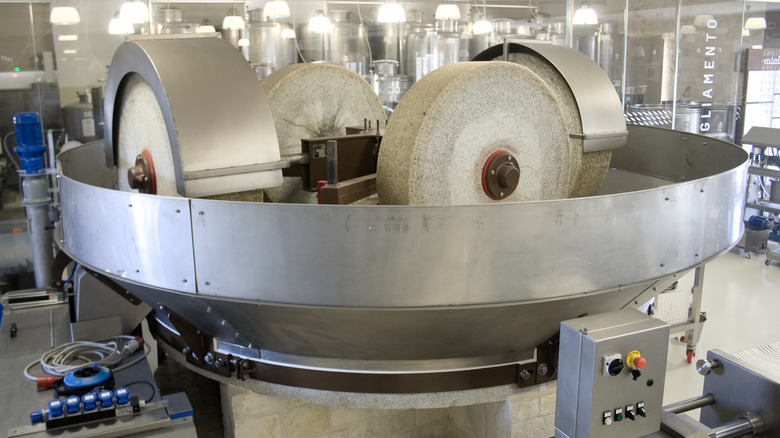Here's Why Olive Oil Is So Expensive
Olive oil is an ancient fruit juice dating back to around 2,500 BCE, per ThoughtCo; the oil, an essential fat used by cooks everywhere today, was interestingly not used for cooking purposes until about the fourth or fifth centuries BCE. Modern olive oil comes in five primary grades: extra virgin olive oil aka EVOO, the most expensive of olive oils; virgin olive oil; refined olive oil (for cooking); pure olive oil; and olive-pomace oil, or OPO, a byproduct of the olive oil milling process.
Given these quality grades, it should come as no surprise that there are different price points as well, but in general, olive oil is an expensive oil, relative to other food oils. A fraud-vulnerability study, published in the food safety journal Food Control, described olive oil as a "high value commodity," and noted that extra virgin olive oil, in particular, was vulnerable to fraud for this very reason.
As said, extra virgin olive oil is the most expensive of olive oils, and when you stop and consider all that goes into bottling one liter of EVOO, its high price starts to make sense. As Foodiosity points out, you have to factor in everything from import fees to taxes to supermarket markups when you begin to dive deeper into why olive oil is so expensive.
Factors in the price of olive oil
Extra virgin olive oil is the most expensive olive oil on the market, largely due to the very specific processes and standards the oil has to meet, as explained by ThoughtCo. For example, to achieve the grade of EVOO, the oil must have no more than 0.8% acidity and must be crafted by one of two methods: pressing the olives with direct contact or by using centrifuges to press the oil out.
Yet another characteristic of more expensive olive oils is "cold-pressing," where the olives are processed at temperatures no greater than 86 degrees Fahrenheit. WebMD says that EVOO, specifically, should never come in contact with heat or chemicals during its milling. Other less expensive olive oils will have higher levels of acidity, as well as more refined processes.
But perhaps the most significant factor in the expensive price of olive oil is the olive itself. As Foodiosity notes, most olives are grown in the Mediterranean and the biggest olive oil producers hail from this region as well; therefore, U.S. consumers are paying the price of an import, and a valuable one at that.
Also, did you know that the olives are all hand-picked? And that it takes the olives of several trees to produce just 1 kilogram of oil? Foodiosity says it takes 9-11 kilograms of olives to cold-press 1 kilo of olive oil. Olive Emotion breaks down the math in another way, noting that it takes anywhere from 5,200 to 8,000 olives to produce just 1 liter of cold-pressed EVOO.

